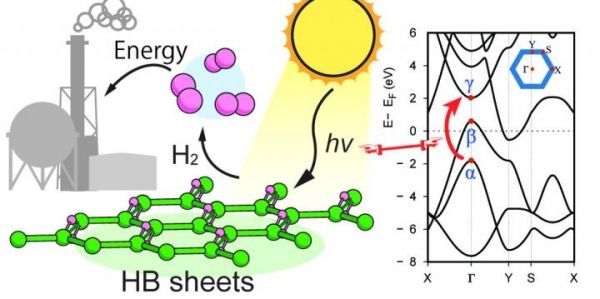Researchers at Tokyo Institute of Technology, University of Tsukuba, and colleagues in Japan report a promising hydrogen carrier in the form of hydrogen boride nanosheets. This two-dimensional material, which has only recently begun to be explored, could go on to be used as safe, light-weight, high-capacity hydrogen storage materials.
Innovative nanosheets made from equal parts of hydrogen and boron have a greater capacity to store and release hydrogen compared with conventional metal-based materials.
This finding by researchers at Tokyo Institute of Technology (Tokyo Tech), University of Tsukuba, Kochi University of Technology and the University of Tokyo reinforces the view that hydrogen boride nanosheets (HB sheets) could go beyond graphene as a nano-sized multifunctional material.
Their study, published in Nature Communications, found that hydrogen can be released in significant amounts (up to eight weight percent) from HB sheets under ultraviolet light, even under mild conditions — that is, at ambient room temperature and pressure.
Read more at Tokyo Institute of Technology
Image: The hydrogen storage and release capacity of HB sheets is exceptionally high due to their two-dimensional nature and unique electronic band structure. (Credit: Nature Communications)


